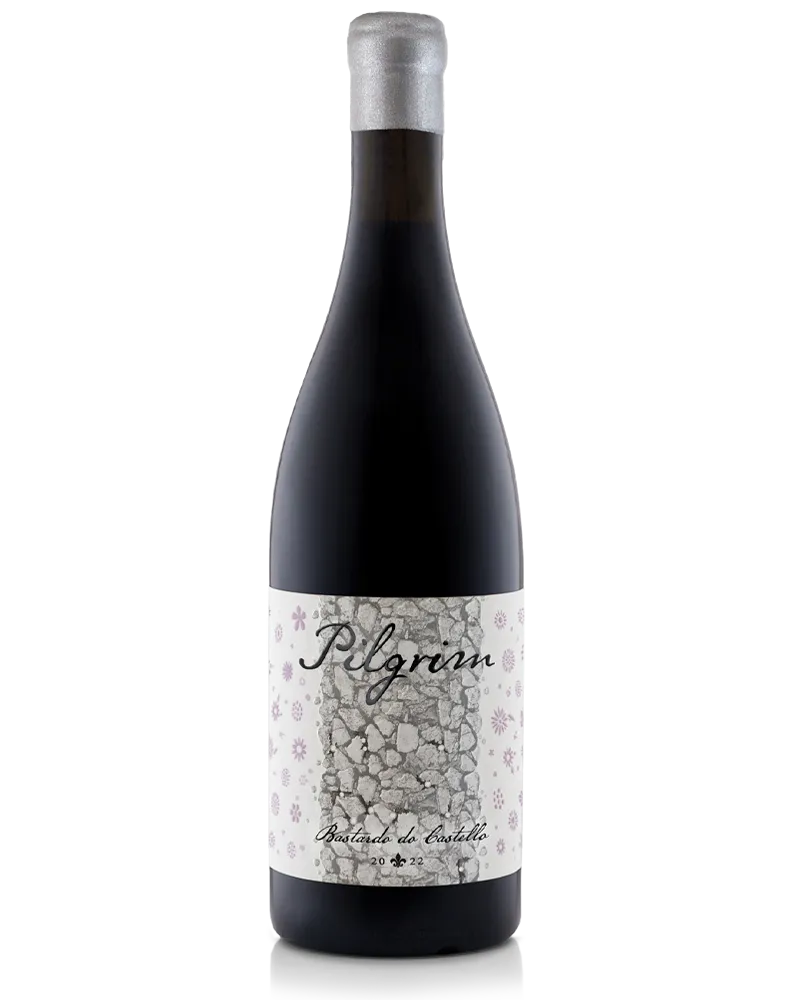
Pilgrim Wines Bastardo do Castello 2022
On the slopes of Stellenbosch Mountain, this exciting Jura cultivar’s roots run deep into the decomposed red/brown granitic soils of origin. Made for the second harvest as the first certified and bottled Bastardo do Castello in SA, the color is a bright cherry red, sparklingly inviting. Starts off with whiffs of lavender and fresh tilled earth, but opens up to aromas of sweet raspberry and sour cherry, baked rhubarb and chamomile. Lighter in structure yet mouth filling on the palate.
Tasting Notes
Bastardo do Castello (as registered by SAWIS in SA) also better known as Trousseau, originated in the Jura region, southeast France. It is a vigorous red wine variety planted in well exposed terroirs and well drained soils. It is a hardy grape and also thrives in drier climates. The bunches are small and the berries medium sized.
The wines produced are characteristic, warm and full-bodied with a pretty bright, ruby colour. Typical of Trousseaus are peppery, violet notes with hints of cherry fruit and a sharpness to the acidity described as minerality.
Barrel maturation typically occurs with less than 10% new oak, for up to 3 years.
Perched on top of a North Eastern sloping hill, nestled between other isolated patches of hard to find vines, these vines enjoy prime views over Stellenbosch and its rolling hills toward Cape Town.
Manicured, and especially nurtured and kept isolated so as to keep safe from encroaching leaf roll virus off of neighboring farmlands, these vines produce amazing fruit. On the slopes of Stellenbosch Mountain – a landmark that epitomizes quality – its roots run deep into the decomposed red/brown granitic soils of origin.
Only 66 vines have been found in Stellenbosch – and in this bottle is the wine that flows from them.
While the rains in winter of 2020 were good, it was also later, and only filled ground water levels much later in the year. This resulted in lower soils temperatures and delayed budburst in September of 2020
With a few less growing-, or ripening days under the belt, the Bastardo came in perfectly ripe at 23.8 balling, together with a fantastic natural acidity!
Harvesting started on the 11th of February 2021, all by hand. The grapes were transported in lug boxes to the Pilgrim cellar for vinification.
66 Vines don’t yield a lot of fruit, so this vintage was fermented in a plastic bin. No tech was used in sorting, crushing, pumping or conveying of the fruit to the bin. Instead, the grapes were dropped into the bin as whole bunches and I got Christian and Jani to do a nice relaxing foot stomp. The addition of a bit of SO2 is always needed.
Natural fermentation was quick and punch downs were the order of the day. This lasted for about a week. The wine was pressed quite quickly after fermentation and put into one small barrel.
Over the next 14 months maturation, we racked the wine from barrel to barrel to improve the natural mechanical sedimentation and cleaning process. This wine never saw a filter in its life.
Please be aware that this wine is made in the most unobtrusive way I could imagine to do. There will be some degree of sediment or crystal formation which is totally natural in these styles of wines.
Color: Bright ruby red. Translucent and not very deep, but riveting
Nose: A very opulent nose – it reminds a lot of classic Hermitage, spicy and herbaceous, with chamomile and fresh peppercorn crushed together. Very seductive red cherry and spring blossom perfume
Pallet: The mouthwatering chalky tannin that lays the foundation is a big vintage improvement and shows the riches that are stored in this stranger of a varietal in SA. Big flavors involving all aromatic profiles proliferate and leaves one thinking – what can this magnificent cultivar not do?
Alc: 13.0%
pH: 3.49
TA: 5.5 g/l
VA: 0.69 g/l
RS: 1.80 g/l
Balsamic leg of lamb with garlic & figs
Enjoy this wine with any of your favourite red meat dishes, especially venison.
Below is a link to a beautiful Leg of Lamb recipe by The Food Fox
Credits
Photography: Tasha Seccombe
Recipe/food preperation: Ilse van der Merwe

